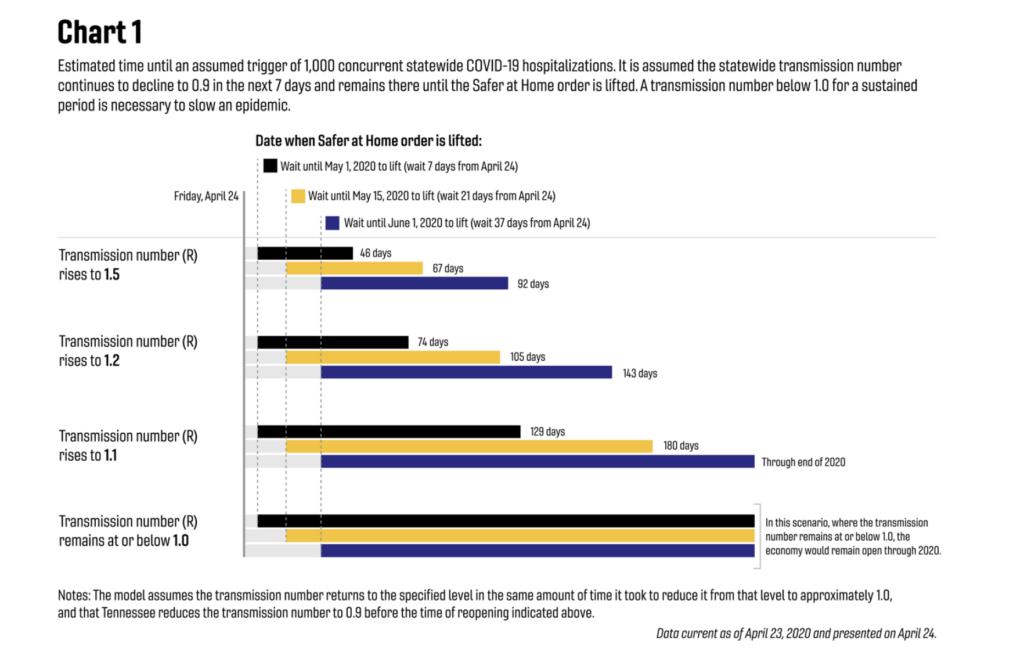
Tennesseans are on the right track in stopping the spread of the coronavirus, according to the most recent Vanderbilt Department of Health Policy modeling report.
Social distancing has been a key factor in that by reducing the transmission of the virus.
Earlier this month, the Vanderbilt model showed that only one additional person was infected for every positive case. Today, the transmission number remains “around 1 in both metro and non-metro areas.” This is based on a state average, and some regions could have a transmission rate above 1.
Based on the Vanderbilt model, in seven days, the rate will decrease to 0.9 — the number needed to slow the pandemic. But that’s dependent on how seriously people take social distancing, researchers say.
“The longer social distancing is continued, the longer we can stay below 1,” says John Graves, a health policy professor at Vanderbilt. “And the more the transmission of the virus is reduced, the longer the economy could stay open before overburdening the state’s hospitals.”
To date, there have been a total of 808 COVID-19 hospitalizations in Tennessee.
According to Vanderbilt, “a trigger of 1,000 concurrent statewide hospitalizations” would be a warning to considering reinstating stay-at-home protocols.
Grave says researchers are unable to predict how much the transmission number will increase as economy restrictions are lifted, but that there will be a natural increase in social contact — even with enhanced physical distancing and PPE protocols.
In the worst-case scenario, it is assumed the number would reach 1.5, rising immediately from 0.9 after the state’s Safer at Home order is lifted on May 1.
In Vanderbilt’s best-case scenario, the transmission number would remain at or below 1. Only then, they say, would the economy remain open through the year, after stay-at-home orders are lifted, without overwhelming hospitals.
“Strong public health measures, including wide spread testing and contract tracing are essential in maintaining this trajectory as we ease social distancing practices,” says Graves.

